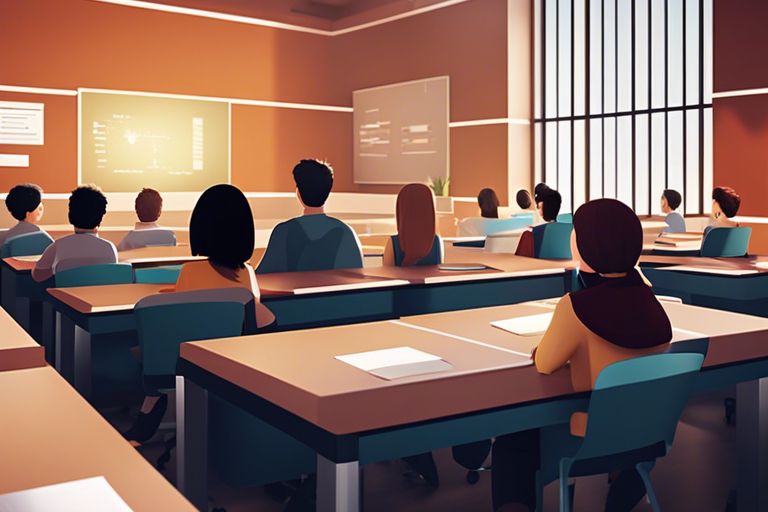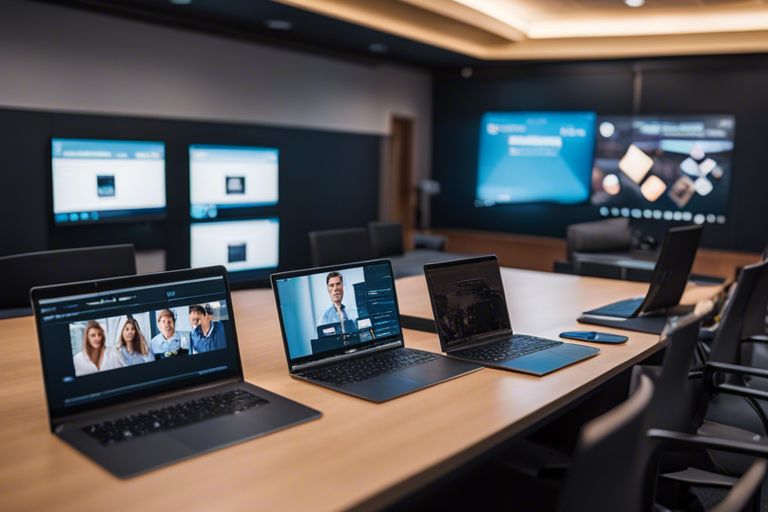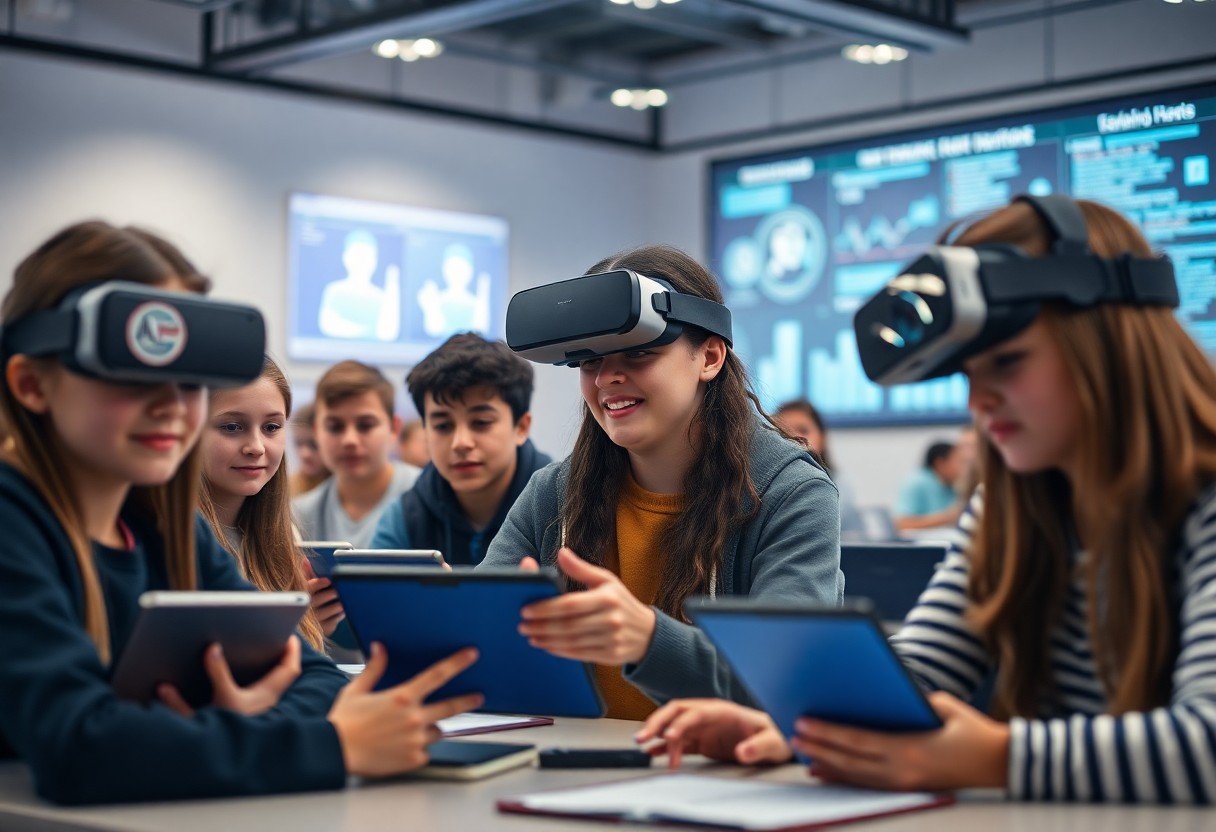AI has revolutionized the field of education, particularly in adaptive tutoring systems. By harnessing the power of artificial intelligence, these systems can tailor learning experiences to meet individual student needs like never before. This advanced technology analyzes student performance in real-time, identifying strengths and weaknesses, and adapting lesson plans accordingly. The result is a personalized and effective learning environment that maximizes student potential.
The Rise of Adaptive Tutoring Systems
The Need for Personalized Learning
For decades, educators have recognized that each student has unique learning needs and preferences. Traditional classroom settings often struggle to cater to individual differences due to time constraints and large student-to-teacher ratios. Adaptive tutoring systems have emerged as a solution to this challenge, leveraging artificial intelligence (AI) to provide personalized learning experiences tailored to each student’s pace, style, and comprehension level.
The Role of Technology in Education
For years, technology has been revolutionizing the education sector, offering new tools and approaches to enhance teaching and learning. The integration of AI in education has paved the way for adaptive tutoring systems that can dynamically adjust instruction based on real-time data analysis of student performance. These systems not only offer personalized guidance but also provide immediate feedback, track progress, and adapt learning content to match the student’s strengths and weaknesses.
Education is no longer confined to the traditional one-size-fits-all model. With the rise of adaptive tutoring systems, students can benefit from customized learning experiences that cater to their specific needs, ultimately fostering better engagement, understanding, and retention of material.
What is Artificial Intelligence in Education?
Defining AI in the Context of Learning
While Artificial Intelligence (AI) has rapidly evolved in various fields, its application in education is transforming the way students learn and teachers instruct. In education, AI refers to the simulation of human intelligence processes by machines, specifically tailored to enhance learning outcomes and personalize educational experiences.
Types of AI Used in Education
What are the various types of AI utilized in educational settings? AI in education encompasses machine learning, natural language processing, deep learning, computer vision, and recommendation systems, among others. After.
- Consequently, AI applications can adapt to students’ learning pace and style, providing personalized recommendations and feedback.
| Machine Learning | Natural Language Processing |
| Deep Learning | Computer Vision |
| Recommendation Systems |
Any educational institution that integrates AI technologies aims to improve overall learning processes, enhance student engagement, and provide personalized support to learners. Incorporating AI in education has the potential to revolutionize traditional teaching methods and create more dynamic and adaptive learning environments.
Types of AI Used in Education
Education institutions and EdTech companies have been leveraging AI solutions in various forms to advance learning experiences. AI tools such as intelligent tutoring systems, educational games, automated grading systems, virtual reality simulations, and personalized learning platforms are becoming prevalent in educational settings. After.
- This diversification of AI applications in education underscores the importance of catering to diverse learning styles and preferences, ultimately improving learning outcomes for students.
- The table below highlights the different types of AI commonly employed in education:
| Intelligent Tutoring Systems | Educational Games |
| Automated Grading Systems | Virtual Reality Simulations |
| Personalized Learning Platforms |
How Adaptive Tutoring Systems Utilize AI
If we probe into the world of adaptive tutoring systems, we uncover a fascinating synergy between education and artificial intelligence. One of the key components that make these systems function effectively is the utilization of machine learning algorithms.
Machine Learning Algorithms
An vital aspect of adaptive tutoring systems is the use of machine learning algorithms to analyze data and provide personalized learning experiences for students. By collecting and processing information on a student’s performance, preferences, and learning style, these algorithms can efficiently tailor the content and pace of the material to suit individual needs. Through continuous feedback and adjustment, the system can accurately predict the student’s future performance and adapt the curriculum accordingly.
Natural Language Processing
Adaptive tutoring systems also leverage natural language processing to enhance the learning experience further. By incorporating NLP algorithms, these systems can interpret and respond to student input in real-time, offering immediate feedback and guidance. This interactive feature not only promotes active engagement but also allows students to clarify doubts and deepen their understanding of the material.
Understanding the nuances of student responses and being able to gauge their level of comprehension are crucial elements that NLP brings to adaptive tutoring systems. By analyzing language patterns and detecting misconceptions or gaps in knowledge, the system can provide targeted interventions to help students overcome hurdles and progress in their learning journey. This level of personalized assistance can significantly boost the effectiveness of the tutoring experience.
Identifying Individual Student Needs
Once again, at the core of an adaptive tutoring system lies the ability to identify and cater to individual student needs. By utilizing AI technology, these systems can assess student strengths and weaknesses, as well as identify learning gaps and styles to provide personalized support and help maximize learning outcomes.
Assessing Student Strengths and Weaknesses
Student assessment is a crucial first step in understanding how to best support their learning journey. Adaptive tutoring systems use AI algorithms to analyze student performance on various tasks, quizzes, and assessments to pinpoint areas where they excel and where they may need additional help. By identifying these strengths and weaknesses, the system can tailor the learning experience to focus on improving weaker areas while also reinforcing existing strengths.
Identifying Learning Gaps and Styles
Learning gaps refer to areas where a student may have missed crucial concepts or struggled to grasp key material. Additionally, learning styles encompass the different ways in which students learn best, whether through visual aids, auditory explanations, hands-on activities, or other methods. Adaptive tutoring systems can identify these gaps and styles by analyzing how students interact with the material, what strategies they employ, and where they may encounter difficulties.
Understanding a student’s learning gaps and styles is crucial for creating a customized learning experience that caters to their individual needs. By leveraging AI technology, adaptive tutoring systems can adapt the content, pace, and format of lessons to align with a student’s unique learning preferences, ultimately enhancing their comprehension and retention of the material.
AI-Driven Assessment and Diagnosis
Not only do adaptive tutoring systems provide personalized learning experiences for students, but they also leverage artificial intelligence (AI) for assessment and diagnosis. This allows the system to understand each student’s unique strengths and weaknesses, enabling targeted support and feedback.
Automated Grading and Feedback
The automated grading and feedback feature in adaptive tutoring systems streamlines the evaluation process for educators, while providing students with instant feedback on their performance. This real-time feedback not only enhances learning efficiency but also promotes self-correction and continuous improvement, as students can immediately address areas where they are struggling.
Real-Time Student Performance Analysis
To further personalize the learning experience, adaptive tutoring systems utilize real-time student performance analysis. By continuously monitoring student progress and engagement, the system can adapt its instruction in the moment to meet the student’s current needs, whether it be offering additional challenges or providing extra support.
Diagnosis: Through AI-enabled assessment and diagnosis, adaptive tutoring systems can pinpoint specific areas where a student may be struggling and offer targeted interventions. This level of personalized support is instrumental in helping students reach their full potential and achieve academic success.
Personalized Learning Paths
Now, let’s explore how adaptive tutoring systems utilize AI to support individual student needs through personalized learning paths. These paths are tailored to each student’s unique learning style, pace, and knowledge level, providing a more effective and engaging educational experience.
Adaptive Difficulty Adjustment
Adaptive difficulty adjustment is a key feature of personalized learning paths. AI algorithms analyze student performance data in real time to adjust the difficulty of questions and tasks. If a student is consistently answering questions correctly, the system will automatically increase the difficulty to keep them challenged. Conversely, if a student is struggling, the system will provide easier questions to help them build foundational knowledge before moving on to more complex topics.
Customized Content Delivery
Paths within personalized learning journeys involve customized content delivery. This means that students receive learning materials that are specifically tailored to their interests, preferences, and proficiency levels. By presenting information in a way that resonates with each student, adaptive tutoring systems can enhance engagement and comprehension.
Adjustment in customized content delivery also extends to the format of the learning materials, such as interactive exercises, videos, quizzes, or simulations. By offering a variety of content types, students can choose the methods that best suit their learning style, further optimizing their educational experience.
Real-Time Intervention and Support
AI-Driven Intervention Strategies
For adaptive tutoring systems, real-time intervention is a crucial component that enables personalized learning experiences. An AI-driven intervention strategy involves monitoring students’ interactions with the system, analyzing their responses, and adjusting the content and pace of instruction in real time based on their performance. By leveraging AI algorithms, these systems can identify areas where students are struggling and provide immediate support through targeted feedback, hints, or additional practice exercises.
Teacher-Student Collaboration
Intervention plays a significant role in fostering collaboration between teachers and students within adaptive tutoring systems. To enhance student learning experiences, teachers can access real-time data on individual student progress and performance, enabling them to provide timely interventions and support. This collaborative approach empowers teachers to track student growth, identify areas of improvement, and tailor their instruction to meet the unique needs of each student.
Enhancing Student Engagement
Gamification and Interactive Learning
Interactive learning techniques are a key aspect of how adaptive tutoring systems leverage AI to support individual student needs. By incorporating elements of gamification into the learning process, these systems can keep students engaged and motivated. Gamification involves integrating game-like elements such as points, badges, and leaderboards into educational activities to make learning more interactive and enjoyable. This approach not only helps students stay focused but also provides instant feedback and rewards, which can enhance their overall learning experience.
Virtual Learning Environments
On the other hand, virtual learning environments play a crucial role in providing students with a personalized and immersive learning experience. These environments utilize AI algorithms to create customized learning paths based on individual student preferences, abilities, and progress. The adaptability of virtual environments allows students to learn at their own pace and in a way that suits their unique learning style, making the educational experience more effective and engaging.
The integration of gamification and virtual learning environments in adaptive tutoring systems represents a powerful combination that can revolutionize the way students learn. By keeping students engaged through interactive activities and offering personalized learning experiences through virtual environments, these systems enhance student motivation, performance, and ultimately, learning outcomes.
Addressing Learning Disabilities and Challenges
AI-Driven Accommodations and Modifications
Unlike traditional teaching methods, adaptive tutoring systems that utilize AI have the capability to address learning disabilities and challenges effectively. Through AI-driven accommodations and modifications, these systems can provide personalized support to students with diverse needs. The AI algorithms can analyze student performance data in real-time, identifying areas of struggle and adapting the learning material to suit individual requirements.
Supporting Students with Special Needs
With the advancements in AI technology, adaptive tutoring systems can provide tailored support to students with special needs. These systems can recognize the unique challenges faced by each student and adjust the learning environment accordingly. This personalized approach can significantly enhance the learning experience for students with disabilities, helping them reach their full potential.
It is imperative to acknowledge the importance of providing inclusive education for all students, including those with special needs. By leveraging AI in adaptive tutoring systems, educators can create a more accessible and supportive learning environment that caters to the individual requirements of each student.
Teacher Support and Professional Development
Despite the incredible capabilities of adaptive tutoring systems, the role of teachers remains crucial in guiding and supporting students’ learning journeys. With the integration of Artificial Intelligence (AI) technologies, educators can access a wide range of tools and resources to enhance their teaching methods and better cater to individual student needs.
AI-Driven Teacher Training and Resources
Resources such as AI-driven professional development modules and virtual training sessions offer educators personalized guidance on how to effectively utilize adaptive tutoring systems in their teaching practices. These resources not only empower teachers to make the most of AI technologies but also provide ongoing support to help them stay updated on the latest advancements in educational AI.
Enhancing Teacher Effectiveness
On the journey towards enhancing teacher effectiveness, AI-powered analytics can offer valuable insights into each teacher’s strengths and areas for improvement. By analyzing data on student engagement, progress, and performance, educators can identify trends and patterns that inform their instructional decisions, ultimately leading to more tailored and impactful teaching practices.
With the support of AI-driven teacher training resources and tools for enhancing effectiveness, educators can cultivate a dynamic learning environment where each student receives personalized attention and support. By leveraging AI technologies in professional development, teachers can continuously refine their skills and adapt their strategies to meet the diverse needs of their students.
Data Analytics and Visualization
Tracking Student Progress and Growth
All data collected from student interactions with an adaptive tutoring system can be analyzed using AI-powered data analytics tools. This data provides insights into each student’s progress, strengths, and areas for improvement. An adaptive tutoring system can track a student’s performance in real-time, allowing educators to intervene promptly with personalized support.
Informing Instructional Design
The data analytics generated by adaptive tutoring systems can also inform instructional design. This information helps educators understand which teaching strategies are most effective for individual students, leading to the creation of more personalized learning experiences. By identifying patterns in student data, educators can tailor their instruction to meet the unique needs of each learner.
Additionally, adaptive tutoring systems can identify gaps in a student’s knowledge or misconceptions, allowing educators to address these areas specifically. By utilizing AI to analyze student data, educators can continuously improve and adapt their teaching methods to better support student learning.

Ensuring Equity and Accessibility
Once again, adaptive tutoring systems powered by AI can play a crucial role in promoting equity and accessibility in education. As technology continues to revolutionize the way students learn, it is crucial to address the digital divide and access issues that can create barriers to learning for certain individuals.
Addressing Digital Divide and Access Issues
Addressing the digital divide involves ensuring that all students have access to the necessary technology and resources to benefit from adaptive tutoring systems. By providing equitable access to technology and personalized learning experiences, AI-driven systems can help bridge the gap between students with different backgrounds and capabilities.
Culturally Responsive AI-Driven Education
With culturally responsive AI-driven education, adaptive tutoring systems can cater to the diverse needs and backgrounds of students. By incorporating cultural references, diverse learning materials, and personalized feedback, these systems can empower students from all walks of life to engage more effectively with the learning process.
Ensuring that adaptive tutoring systems are culturally responsive not only enhances student engagement and learning outcomes but also contributes to creating a more inclusive educational environment where every student feels valued and supported.
Overcoming Challenges and Limitations
Addressing Bias in AI Systems
To address bias in AI systems, systems must be designed to recognize and eliminate any biases present in the data used to train them. This can be achieved through constant monitoring, auditing, and adjusting of algorithms to ensure fair and accurate outcomes for all students. Transparency in the decision-making process of AI systems is crucial to building trust and credibility.
Balancing Technology with Human Touch
One way to balance technology with human touch is by integrating AI with human teachers or mentors who can provide personalized guidance and emotional support to students. While AI can analyze data and provide personalized recommendations, human interaction adds a level of empathy and understanding that is crucial for effective learning. By combining the strengths of both AI and human instructors, students can receive a well-rounded educational experience.
Challenges arise in finding the right balance between relying on AI for personalized learning and maintaining the human connection in education. It is important to ensure that technology complements the teaching process rather than dominating it, as the human aspect plays a critical role in student engagement and motivation.
Conclusion
From above, we can see that adaptive tutoring systems utilize AI in a variety of ways to cater to individual student needs. By utilizing machine learning algorithms, these systems can analyze student performance data in real-time and provide personalized feedback and recommendations to enhance the learning process. The use of AI in education is revolutionizing how students receive instruction and support, making learning more engaging and effective.
As we continue to see advancements in AI technology, we can expect adaptive tutoring systems to become even more sophisticated and tailored to individual student needs. By harnessing the power of AI, educators can provide personalized learning experiences that cater to each student’s unique strengths and weaknesses. The future of education is bright with the integration of AI, creating a more personalized and effective learning environment for students of all ages.
FAQ
Q: What are Adaptive Tutoring Systems?
A: Adaptive Tutoring Systems are educational technologies that use artificial intelligence (AI) to personalize the learning experience for individual students based on their specific needs and learning styles.
Q: How do Adaptive Tutoring Systems function?
A: These systems collect data on students’ performance and interactions with the platform, analyze this data using AI algorithms, and then provide customized learning materials and feedback tailored to each student.
Q: What are the benefits of using AI in Adaptive Tutoring Systems?
A: AI allows these systems to adapt in real time to students’ strengths and weaknesses, providing personalized support and guidance that can improve learning outcomes and increase engagement.
Q: How can AI personalize the learning experience for students?
A: AI can track students’ progress, identify areas where they are struggling, and provide additional practice or resources specifically targeted to help them overcome challenges and reinforce learning.
Q: Are there any challenges associated with using Adaptive Tutoring Systems?
A: One challenge is ensuring the accuracy and reliability of the AI algorithms used to make decisions about students’ learning needs. Additionally, it’s important to address concerns about data privacy and ethical use of student data.
Q: How are educators involved in the use of Adaptive Tutoring Systems?
A: Educators play a crucial role in integrating these systems into the classroom, monitoring student progress, and providing additional support and guidance based on the insights generated by the AI technology.
Q: What does the future hold for the use of AI in Adaptive Tutoring Systems?
A: As AI technology continues to evolve, we can expect to see even more sophisticated and personalized learning experiences for students, with the potential to revolutionize education and make learning more accessible and effective for all learners.




